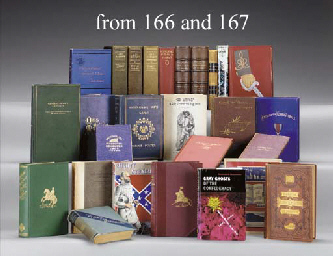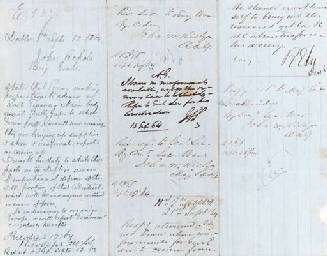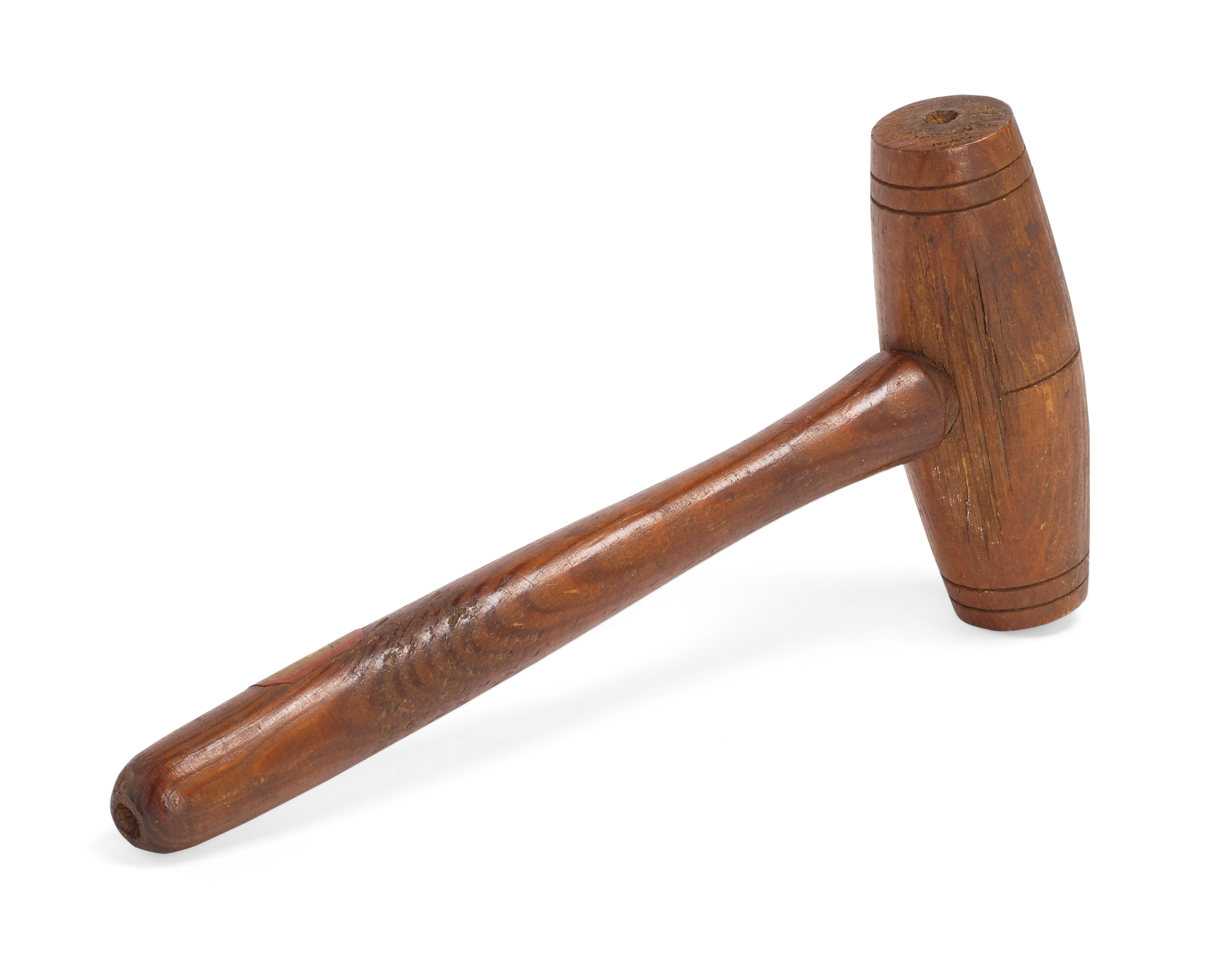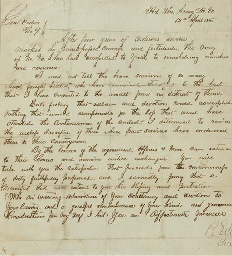CIVIL WAR]. LEE, Robert E. Autograph letter signed ("R. E. Lee") to Brig. Gen. J.E.B. Stuart, Head Quarters, Taylers[?], 18 August 1862. 1 page, 4to, ruled paper , marked "confidential". "I HOPE TO BE PREPARED TO DAY TO CROSS TOMORROW..." AN OUTNUMBERED LEE PLANS A BOLD BREAK-OUT ACROSS THE RAPIDAN LEE'S CRITICAL FIRST MOVES IN THE SECOND MANASSAS CAMPAIGN. When he arrived at Gordonsville on 15 August 1862, Lee immediately saw an opportunity: Pope's Union forces were in an exposed, "V"-like position north of the Rapidan with the Rappahannock to their backs. If Lee could cross the Rapidan and then get behind Pope and burn the bridges over the Rappahannock, he could have 50,000 Federals trapped. Here he orders J.E.B. Stuart to make the first move: "I hope to be prepared to day to cross [the Rapidan] tomorrow. I wish to know whether you will be, & where your troops (Lee's brigade) are. The order placing you in command of Cav l accompanied this. When you move, for which you must wait for orders, I think it will be necessary to leave the Cav l pickets of Gen l Robertson's brigade in their usual position under a vigilant officer & draw the rest to you. This could be done the ev g previous and must be looked to today. Col. Jones may be the best officer to leave in charge of pickets with orders to be vigilant & to make stout resistance against any attempts upon his position. Let me have from you as soon as you know the time at which you will be prepared. You must have your rations prepared. Hard bread will be issued for the march but must not be used previously. The supply is very limited." Lee characteristically seeks swift action and surprise. But his subordinates let him down this time. Fitz Lee's brigade did not rendezvous with Stuart as expected on the 18th. Worse, the night before Lee sent this letter, Union forces captured Stuart's adjutant general, Major Norman R. Fitz Hugh, with a copy of Lee's battle plans on him. Early the following morning Stuart and his staff escaped capture as well, with Stuart frantically jumping astride his horse and clearing a fence, leaving behind his Yankee pursuers, along with his plumed hat, cloak, sash and still more crucial battle plans. Just as characteristically, the inept Union commanders squandered their opportunity. Even knowing Lee's plans they could not deploy their vastly superior numbers to stop him (Pope and McClellan combined had some 130,000 men against Lee's 75,000). By 20 August Stuart was able to cross the Rapidan. Lee, realizing that he was still in danger of being enveloped, decided to continue his bold stroke in spite of losing the element of surprise. Between 20 and 25 August, he sent Stuart and Jackson over 30 miles around Pope's lines, paying attention (as he notes here in the letter) to keep the Confederate pickets vigilant and aggressive, to protect against any attack on the moving forces. By the 25th, Stuart's menacing presence in Pope's rear had exactly the intended effect: sowing panic and confusion in the mind of the Union commander about the Confederate cavalrymen's intentions. Paralyzed by uncertainty, and making wrong assumptions when he finally did move, Pope's overwhelming numerical superiority was squandered and Lee's divided corps were able to reunite by 29 August and inflict severe losses on Pope at Second Bull Run (29-30 August 1862). Indeed, the Union army was almost enveloped and destroyed but for determined fighting that kept an escape route open, allowing the battered bluecoats to slink back ignominiously to the defenses of Washington, D.C. Pope was finished as a commander, and the reputations of Lee, Jackson and Stuart had just been given another lustrous polish.
CIVIL WAR]. LEE, Robert E. Autograph letter signed ("R. E. Lee") to Brig. Gen. J.E.B. Stuart, Head Quarters, Taylers[?], 18 August 1862. 1 page, 4to, ruled paper , marked "confidential". "I HOPE TO BE PREPARED TO DAY TO CROSS TOMORROW..." AN OUTNUMBERED LEE PLANS A BOLD BREAK-OUT ACROSS THE RAPIDAN LEE'S CRITICAL FIRST MOVES IN THE SECOND MANASSAS CAMPAIGN. When he arrived at Gordonsville on 15 August 1862, Lee immediately saw an opportunity: Pope's Union forces were in an exposed, "V"-like position north of the Rapidan with the Rappahannock to their backs. If Lee could cross the Rapidan and then get behind Pope and burn the bridges over the Rappahannock, he could have 50,000 Federals trapped. Here he orders J.E.B. Stuart to make the first move: "I hope to be prepared to day to cross [the Rapidan] tomorrow. I wish to know whether you will be, & where your troops (Lee's brigade) are. The order placing you in command of Cav l accompanied this. When you move, for which you must wait for orders, I think it will be necessary to leave the Cav l pickets of Gen l Robertson's brigade in their usual position under a vigilant officer & draw the rest to you. This could be done the ev g previous and must be looked to today. Col. Jones may be the best officer to leave in charge of pickets with orders to be vigilant & to make stout resistance against any attempts upon his position. Let me have from you as soon as you know the time at which you will be prepared. You must have your rations prepared. Hard bread will be issued for the march but must not be used previously. The supply is very limited." Lee characteristically seeks swift action and surprise. But his subordinates let him down this time. Fitz Lee's brigade did not rendezvous with Stuart as expected on the 18th. Worse, the night before Lee sent this letter, Union forces captured Stuart's adjutant general, Major Norman R. Fitz Hugh, with a copy of Lee's battle plans on him. Early the following morning Stuart and his staff escaped capture as well, with Stuart frantically jumping astride his horse and clearing a fence, leaving behind his Yankee pursuers, along with his plumed hat, cloak, sash and still more crucial battle plans. Just as characteristically, the inept Union commanders squandered their opportunity. Even knowing Lee's plans they could not deploy their vastly superior numbers to stop him (Pope and McClellan combined had some 130,000 men against Lee's 75,000). By 20 August Stuart was able to cross the Rapidan. Lee, realizing that he was still in danger of being enveloped, decided to continue his bold stroke in spite of losing the element of surprise. Between 20 and 25 August, he sent Stuart and Jackson over 30 miles around Pope's lines, paying attention (as he notes here in the letter) to keep the Confederate pickets vigilant and aggressive, to protect against any attack on the moving forces. By the 25th, Stuart's menacing presence in Pope's rear had exactly the intended effect: sowing panic and confusion in the mind of the Union commander about the Confederate cavalrymen's intentions. Paralyzed by uncertainty, and making wrong assumptions when he finally did move, Pope's overwhelming numerical superiority was squandered and Lee's divided corps were able to reunite by 29 August and inflict severe losses on Pope at Second Bull Run (29-30 August 1862). Indeed, the Union army was almost enveloped and destroyed but for determined fighting that kept an escape route open, allowing the battered bluecoats to slink back ignominiously to the defenses of Washington, D.C. Pope was finished as a commander, and the reputations of Lee, Jackson and Stuart had just been given another lustrous polish.















Try LotSearch and its premium features for 7 days - without any costs!
Be notified automatically about new items in upcoming auctions.
Create an alert